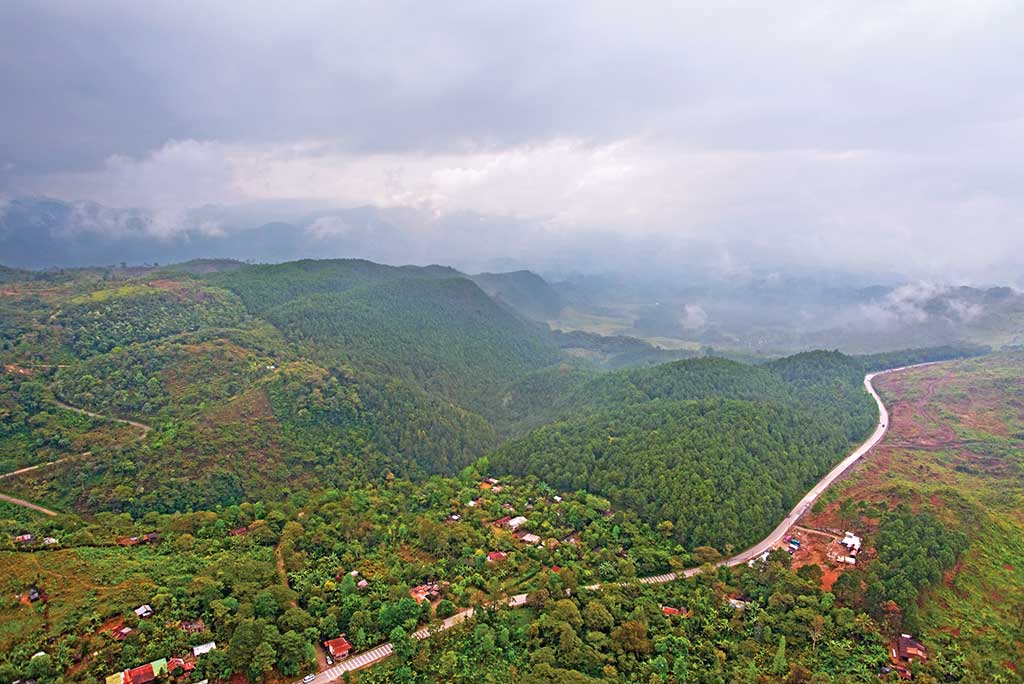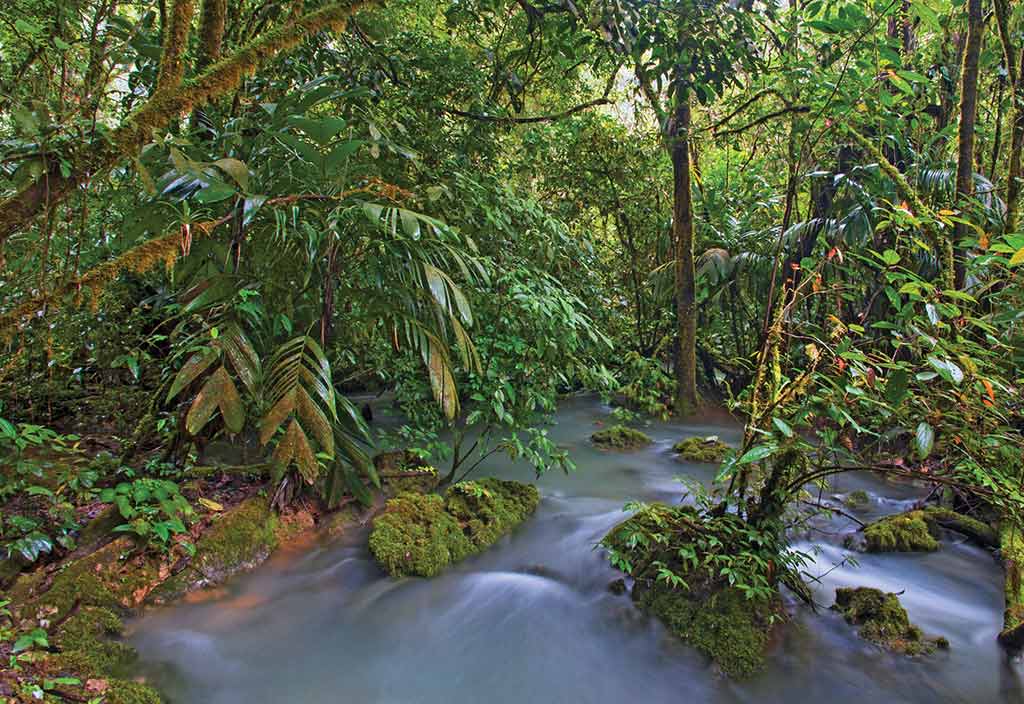During the dry season (November-April), much of Guatemala starts to look parched and brown, especially beginning in January. If you yearn for greener pastures, this is where the country’s brilliant microclimates come in. The area of Las Verapaces remains green and lush throughout most of the year, thanks to the almost year-round presence of a light mist known as chipi-chipi. The area is also largely covered in beautiful cloud forests, soaked in rains and shrouded in cloud more often than not. Below is a sampling of the region’s myriad attractions.

A scenic highway leads south from Petén into Alta Verapaz. Photo © Al Argueta.
A destination for the serious hiker and outdoor enthusiast is Sierra de las Minas Biosphere Reserve. Some of the best hiking anywhere in Guatemala, and Central America for that matter, can be found here. Several trails wind through this remote wilderness, allowing the opportunity to spot quetzals, and explore the cloud forest habitat. Starting in the village of Albores, hook up with a local conservation organization FUNDAECO for hikes to nearby attractions like Peña del Angel and accommodations in its private biological station.
North of the regional services hub of Cobán (the departmental capital of Alta Verapaz), a dirt-road turnoff from the main (paved) road leads across verdant pastures and rainforest-clad hillsides to the lovely Parque Ecológico Hun Nal Ye. A private reserve and working farm, the park offers many opportunities for outdoor exploration, including hikes to a pristine, azure-colored river, a raging waterfall, a cenote (limestone water-filled sinkhole), four-wheeling on designated areas of the property, and horseback riding. A small museum houses a replica of a magnificently carved stone Mayan box, which was stolen from the property but then returned. The original now resides in a museum in Guatemala City.

Jungle river at Parque Ecológico Hun Nal Ye. Photo © Al Argueta.
Continuing farther into the northern reaches of Alta Verapaz department, this circular lagoon surrounded by rainforests is somewhat remote but very much worth the effort. Its clear waters vary between an emerald and turquoise color, thanks to the limestone bedrock all around. Like the better-known sinkholes in Mexico’s Yucatán Peninsula, to the north, it is thought to have been created by a meteor impact millions of years ago. It makes an idyllic place for camping, swimming in its cool waters, and simply admiring the scenery in splendid isolation.
In northeast Alta Verapaz, another dirt road veers off from the main road and leads to some of Guatemala’s most beautiful, lesser-known sites. Lanquín is a small town about 12 kilometers from the junction with the main highway harboring several cool ecolodges and Lanquín’s magnificent eponymous caves. It also serves as the starting point for white-water rafting trips on the Río Cahabón. The same dirt road continues another 11 kilometers to the absolutely gorgeous pools and waterfalls of Semuc Champey, passing the K’an Ba caves along the way.
Excerpted from the Fifth Edition of Moon Guatemala.